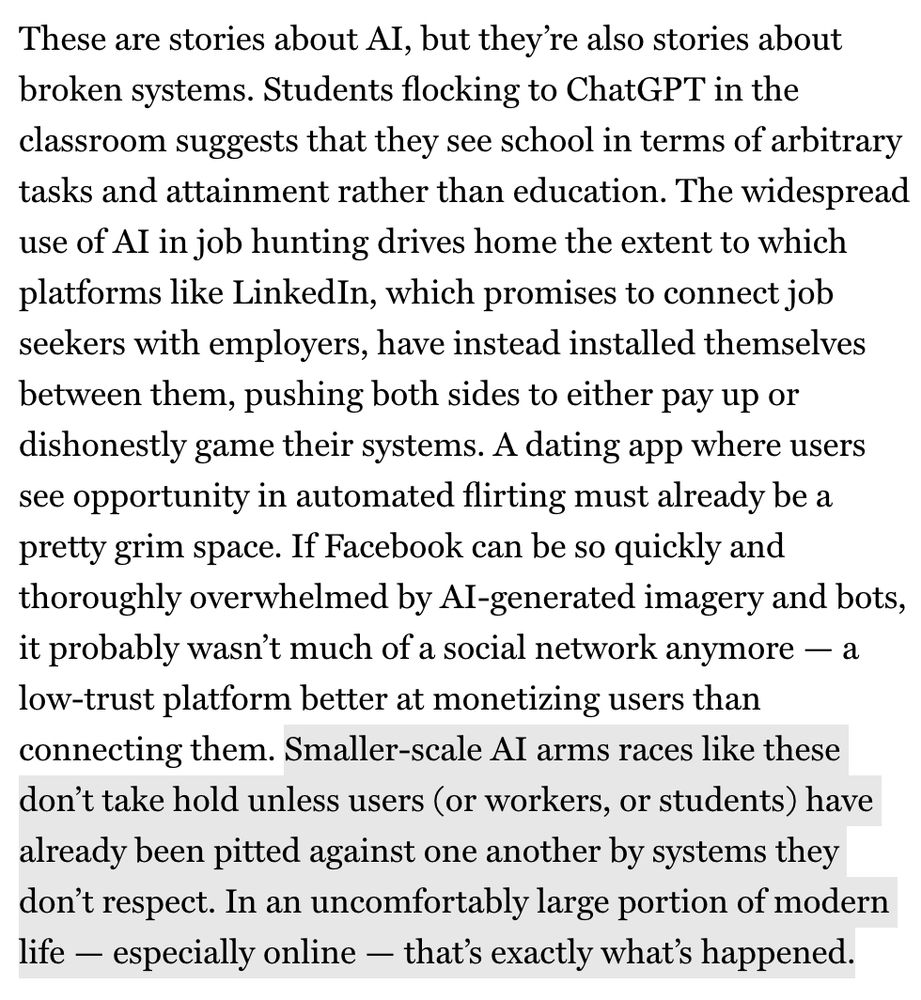John Herrman
@jwherrman.bsky.social
7.7Kfollowers
547following
573posts
posting about posts at new york magazine. have me on your podcast!
Top posts
Latest posts
John Herrman·Oct 23
Deep research tools *did* get better after I wrote this but I wonder if people might be revisiting their rapturous reviews now that the novelty has worn off. A few months in, DR outputs remain technically impressive but they're also often... unreadable dogshit? Not useful? nymag.com/intelligence...













